Monday 31st March - Stocker’s Lock to Denham Deep Lock
A fine sunny day, so we set the boat up and made our way to Denham Deep Lock. Dave was quite nervous about whether we would secure a mooring or not, but it was such a lovely day we decided to go anyway.
We passed a derelict structure with a monkey hanging from the burnt out rafters! This is a former quarry works. Many have labelled this on the net as the Harefield Limeworks though on various old maps from the 1870s to the 1970s the site is only identified as a chalk quarry and there seems to be no historical documents about any limeworks. Chalk is a type of limestone, but there is no historical reference to limestone or burning chalk to form quick lime (calcium oxide). Today it is known as the Hanging Monkey due to the large monkey dan gling from a chain high up the high steel frame.
On many of the stretches the canal is joined at various times by a number of different rivers. The flow from this one was quite vicious and it pushed the boat to one side as we passed.
Another place where the river joins the canal is below the lock at ‘The Coy Carp’. The turbulence is so extreme that has been set up as a slalom course. The Harefield Canoe Slalom course is also known as ‘The Fisheries’ as that was the original name of the pub.
We found a delightful mooring above Denham Deep Lock and moored up for the night.
Jules Fuels boats were ahead of us and Dave watched as they made their way through the lock. It is quite a procedure as the second boat is a ‘butty’ with no engine and needs to be tied up alongside to enter and exit the locks. It is then towed along the canal.
We took a walk into Denham Village, very picturesque and often used in various film and TV programmes as an essentially English village. This house has a blue plaque as John Mills lived here. It also has the most amazing wisteria on the front of the house which is just coming into bud.
I love these pretty yellow flowers looking so delicate under the trees. Lesser celandine is a characteristic spring flower of woodlands, hedgerows, graveyards and parks where its shiny flowers can carpet an area with gold between March and May. As one of the first spring flowers to bloom, it provides a valuable nectar source for early insects.
Behind the walls and ornate gates is Denham Place, a grade I listed building which is said to be the closest you could get to a palace outside of London, it would set you back a cool 75 million pounds as of the last time it changed hands.
On our way back to the boat we passed an interesting spectacle - a boat within a boat and therefore out of the water and being worked on. An amazing sight!
5 miles, 3 locks, 3hrs 6mins
Tuesday 1st April - Denham Deep Lock
Today we are spending the day at Denham, as we have a mooring in Paddington from tomorrow and we shall do the trip from here to Paddington in one day.
We went for a walk into Denham Village and had a drink at one of the three pubs in the village. This building is on the outskirts of the village and has a look of Art Deco about it, but probably built in the 18th century. It has the River Misbourne
running through the lawned gardens.
On our way back through the golf course we spotted a white egret which took off as we approached. Dave managed to get it in flight which is brilliant.
Wednesday 2nd April - Denham Deep Lock to Paddington Basin
We got up early today to make an early start on our trip into London.
An 8.30am start and we are entering Denham Deep Lock, just about 11ft deep. A glorious day with three locks and about 20 miles of cruising. The only problem was that it was a little breezy!
The last lock of the day and we were lucky enough to share it with another boat, a fuel boat which operates between Paddington and Uxbridge. However soon after leaving the lock, the tiller became very difficult and we pulled over to investigate the weedhatch. We had picked up a large sheet of white plastic, but as we had stopped immediately it came away very easily!
The Slough Arm, we didn't go down this time, but it is generally considered not to be worth while. It looks very pretty from here though.
We got to Bull’s Bridge Junction and turned left onto the Paddington Arm and this was when it became really windy with gusts up to 30mph. We had to hold down the pram hood as the wind was lifting it up!
We spotted some very interesting buildings on our trip, this one seems to be supported on iron scaffolding.
We were pleasantly surprised that there were more places we could have stayed overnight, rather than doing this trip in one go. On our way back we shall probably spend a night on the arm before heading down to Brentford.
We stopped at the services just before you get into Little Venice. We needed to fill up with water and dispose of all our rubbish as we aren’t sure of the facilities available in the Basin.
We went through the bridge and then turned right in to Paddington Basin. We found our mooring and went straight in, it was so windy we decided to leave turning the boat in the winding hole until the winds are lighter.
20 miles, 3 locks, 7hrs 36mins
Thursday 3rd April - Paddington Basin
The view from the side of the boat to the end of the Paddington Arm. There are two other boats moored, but other wise it is very quiet.
The last time we were here every mooring was taken apart from the one right at the end which we took.
We decided to spend the day walking along the canal to Camden Lock and have a look around Camden Market. This is a building opposite Paddington Station, I thought they were cleaning the windows!
A blue Paddington outside the station. This is part of the ‘Paddington Visits Trail’ throughout the UK. There are 23 statues altogether including one in Newbury, Michael Bond’s home town.
We walked out to Little Venice, standing on the bridge we are looking at Browning’s Pool. Named after the poet Robert Browning, the island in the middle of the junction of the Grand Union Canal and Regents Canal is home to a wide variety of ducks and geese.
There are six of these mansions on the canalside. These Regency style villas were designed by the English architect Quinlan Terry, and built between 1998 and 2014. They are worth around 7 million pounds and are all privately owned.
Regents Zoo borders the canal, this is the Monkey enclosure, but we didn't see any monkeys. The zoo opened in 1828 as the world’s first scientific zoo and opened to the public in 1847. It is still a research centre helping to conserve numerous species in naturalistic habitats.
This three storey Chinese restaurant is called the Feng Shang Princess, a floating restaurant and an iconic scene on the Regents canal.
We had a wander around the market at Camden before finding some lunch and taking in the atmosphere.
This is the Camden Market West Yard covered market stall, very ornate and pretty.
Sitting above the food market having our lunch and enjoying the sunshine and atmosphere.
Camden Stables, now the site of the stables market, the stables are the biggest remaining complex of Victorian industrial heritage buildings in London. As well as the stables and tack room, there was also a horse hospital of sorts. Injured horses would be hoisted from the ceiling in slings to take the weight off their sore legs. Now, the horse hospital is a music venue and art gallery.
At the end of the day we decided to take the Waterbus back to Little Venice. We passed these properties bordering the canal, beautifully renovated. They are the only properties in London which have a garden and a mooring for a boat included in the price of the property. About 5 million pounds!
We walked back to the boat and had a well earned cup of tea, we were all pretty tired!
Friday 4th April - Paddington Basin
Today we are heading off to Soho and Covent Garden. This will be the first time Toby has been on the Underground, so fingers crossed!
Once we had sorted out how to pay on the Underground we went down to the Elizabeth Line, very smart, clean and tidy. Toby coped wonderfully on the escalators and sat quietly on the trains so all was good.
We found Soho Square and sat for a while in the sunshine. It was great to see lots of people enjoying the sunshine. Soho Square dates back to the 1680s in an area of land known previously as Soho fields. The half-timbered black and white building in the centre, which was built in 1895 was refurbished in 2009.The site contains a statue of Charles II. It is recorded that in the 1790s the Garden was planted with Almond, Peach, Cherry, Lilac, Roses, Laburnum and Honeysuckle.
We realised that we were sitting on a bench dedicated to Kirsty McCall, and she is remembered annually by friends and fans on a date near her birthday. Soho Square was the setting for one of her songs the words of which are engraved on the plaque.
In our wanderings we came across Ronnie Scott’s, a world famous jazz club opened in 1959.
Then we arrived at our lunch venue. Following a recommendation from a friend we decided to have our lunch there. L’Escargot, the oldest French restaurant in London, is housed in a magnificent Georgian town-house dating from 1741. The building was the private residence of the Duke of Portland, At that time Soho was a country area, very popular for horseback hunting – and the name derives from a popular hunting cry of the time – “soohoo”. The food was delicious and we had a lovely time.
Afterwards we headed off to Covent Garden, but found ourselves in the middle of China Town. Still decorated for the New Year celebrations, the whole area looked wonderful. 2025 is the Year of the Snake
in the Chinese zodiac, the Snake symbolises wisdom, intuition, and transformation.
The very first musical we ever went to see in London, many moons ago. Les Miserables was such an experience and we have always said that we would like to see it again some day.
We eventually arrived at Covent Garden. Covent Garden's history begins as a "convent garden" belonging to Westminster Abbey, evolving into a market and then a luxury shopping and entertainment district, with Inigo Jones designing the iconic piazza in the 1630s.
After another journey on the Underground we arrived back at Paddington Basin. This is the view of Paddington Arm right up to the end and as you can see there are very few boats staying. This could be because all the mooring is now pre-bookable and there are no free moorings anymore.
Saturday 5th April - Paddington Basin
Today we walked to Kensington Gardens, for a picnic in the sunshine. These are the fountains in the Italian Gardens. Created in 1860, the gardens are believed to have been a gift from Prince Albert to his beloved Queen Victoria.
Shrine of Youth: the Peter Pan Statue – the boy who wouldn’t grow up. J. M. Barrie’s beloved hero first appeared in a novel called The Little White Bird published in 1902. In this story, Peter is a ‘betwixt-and-between’ boy-bird who finds himself stranded in Kensington Gardens and raised by the magical creatures who live there. In 1912, a statue of Peter Pan was erected next to the Long Water. This statue was a gift from J. M. Barrie, who generously funded it himself.
We have seen many of these Egyptian geese, but this was the first pair with goslings.
Whilst we were sitting on a park bench having our picnic, Dave saw a buggy roll into the water and sink. The family were watching the children and hadn’t noticed until a member of the public drew their attention to it! It was rescued by a patrol boat from the pedalo people.
We also saw a coot sitting on a nest made up of mostly twigs but also different types of plastic and other rubbish.
We came across this art installation. The Arch is a large Roman travertine sculpture made by the British artist Henry Moore. In 1978, the artist’s eightieth-birthday exhibition took place near the Serpentine Gallery in London, and with this occasion, several large artworks had been located around Kensington Gardens. Two years after, there was a specific request for this sculpture to be left there indefinitely. Since Moore liked the natural setting and how the arch was reflecting into the water from across the lake, he agreed to eventually donate it to Hyde Park. Through the Arch, in the distance is Kensington Palace.
We then walked along to Marble Arch which is completely shrouded for renovation work and on up the Edgware Road back to Paddington Basin. Another lovely day in London.
Sunday 6th April - Paddington Basin
Today’s excursion was to the South Bank, a walk along the river and back along the North bank.
We took the tube to Waterloo and walked along to the Royal Festival Hall. There is the most amazing food market, on Fridays, Saturdays and Sundays the piazza on Belvedere Road behind the Southbank Centre’s Royal Festival Hall is transformed into a lively street food market. The majority of stalls have been serving here for years and the friendly owners behind the counters all know each other, adding to the unique community spirit of this bustling street food market. Every month four new stalls debut their street food too, meaning that regular visitors always have something different to try!These are bronze statues by Klaus Weber. Peacock, one of the two bronze sculptures, is a hybrid human whose hips emit an exuberant jet of water, suggesting a magnificent white bird fanning its plumage. At intervals, the cascade of water deluges the sculpture, extinguishing its plumes and marking a tension between what the artist calls ‘gravity and levity’. Thinking Fountain, the second bronze figure, assumes a pose of contemplation. A fountain of water surges upwards from its neck to suggest the shape of a head, before falling down its bronze body.
Taken from the waterfront is the skyline of the financial district, very modern glass buildings with the iconic dome of St Paul’s cathedral to the left.
We also realised that London’s Half Marathon was taking place on the opposite side of the river, many runners and some very loud music!
We walked along to the Millenium Bridge. Officially known as the London Millennium Footbridge, this iconic pedestrian bridge gracefully spans the River Thames, connecting the Tate Modern Art Gallery to Saint Paul’s Cathedral. This groundbreaking structure means that the cables never rise more than 2.3 metres above the deck, allowing those crossing the bridge to enjoy uninterrupted panoramic views and preserving sight lines from the surrounding buildings. It is also the first footbridge to be built across the Thames in 100 years.
The Shard - Irvine Sellar, The Shard's developer and joint owner, had an ambitious vision to create an architecturally striking vertical city incorporating retail, offices, hotel, apartments, restaurants and a public viewing gallery. As the sun sets, The Shard comes alive with a stunning hourly lighting display. From sunset until 1am, the top 20 storeys of the UK's tallest building are transformed by 575 energy-efficient LED units, each marking the hour with a brilliant burst of light that celebrates the passing of time.
Cleopatra’s Needle - Cleopatra’s Needle is the obelisk that stands on the Thames Embankment in London. It was transported from Egypt to London in 1877. The Sultan of Egypt and Sudan presented the obelisk to the British Government in 1819, in commemoration of Lord Nelson’s victory at the Battle of the Nile in 1798 and Sir Ralph Abercromby’s victory at the Battle of Alexandria in 1801.
We then caught the tube back to Paddington Basin and enjoyed the peace and quiet of the Basin.












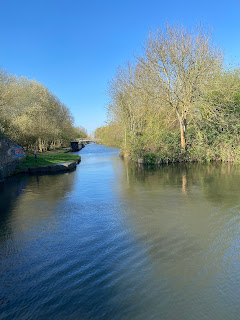








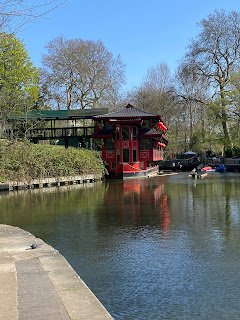







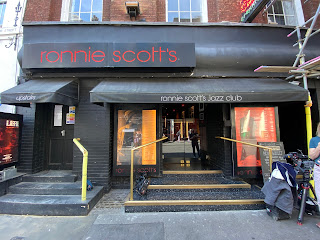

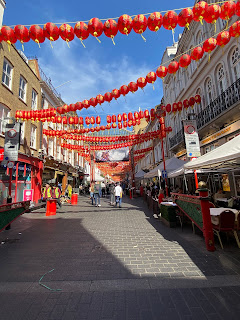



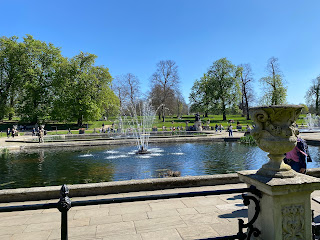














No comments:
Post a Comment